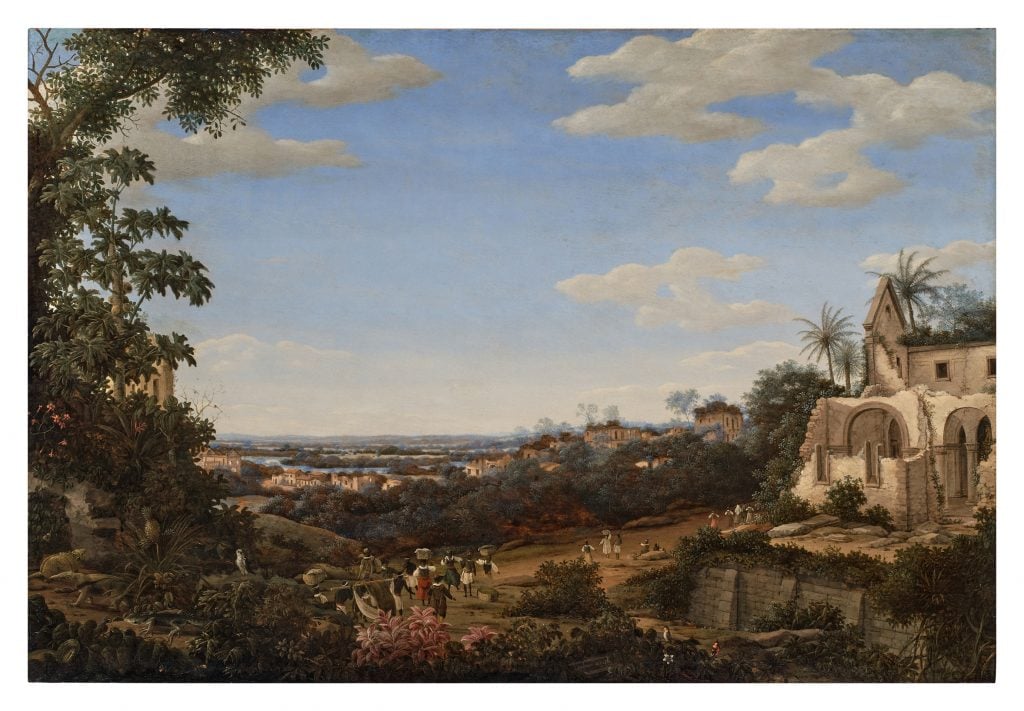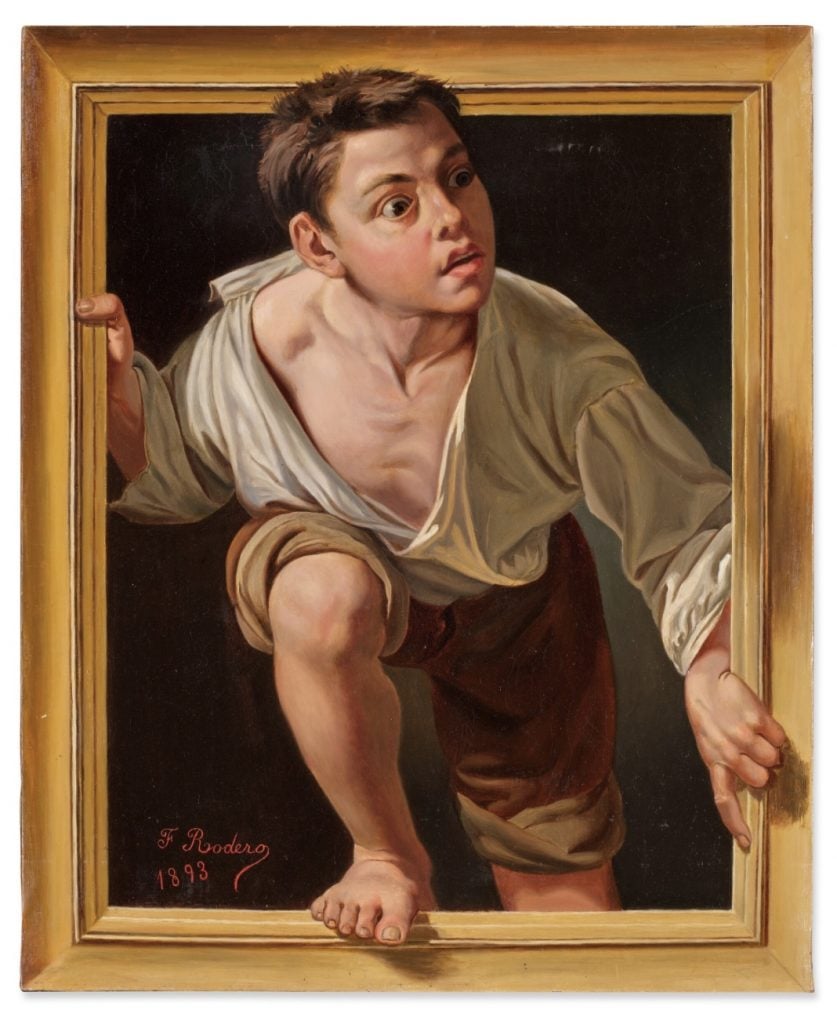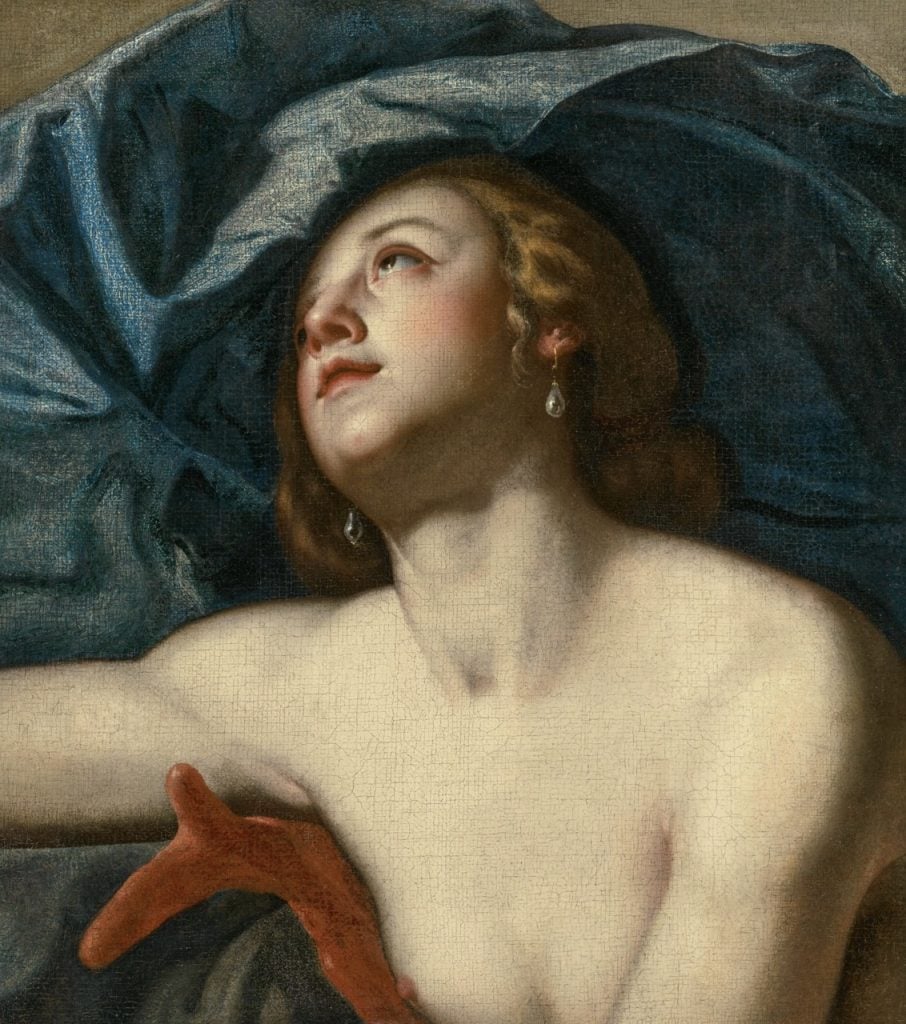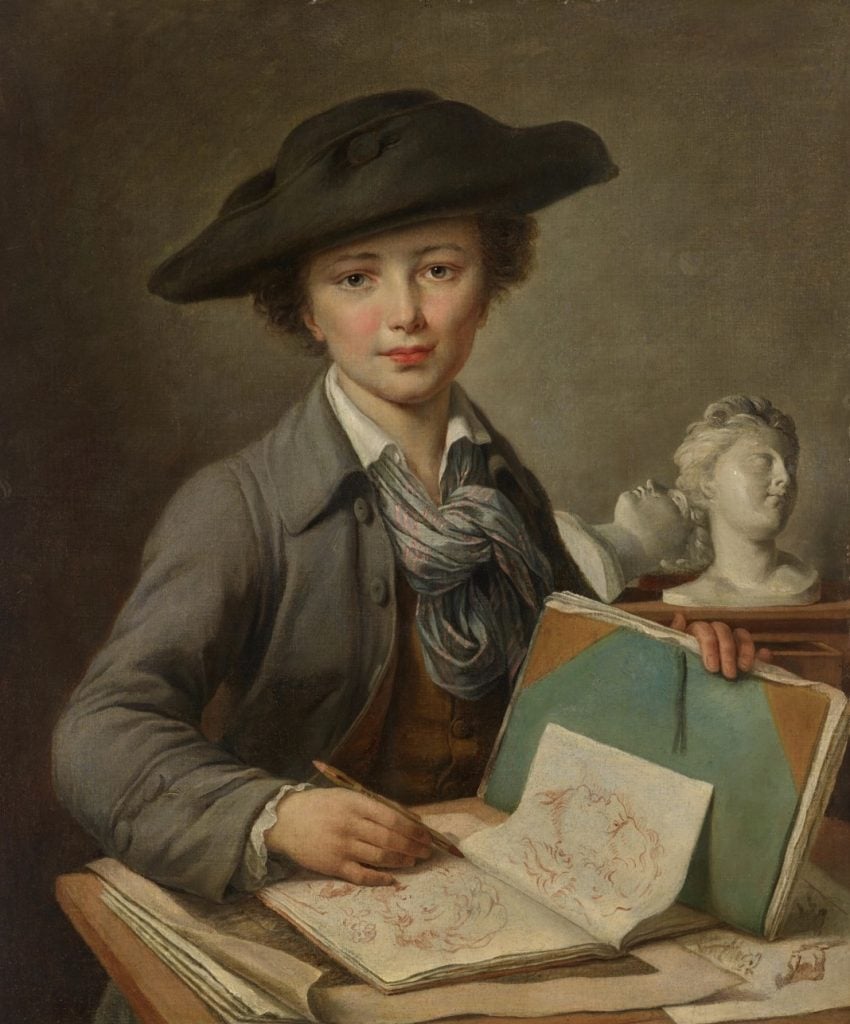What the hell is going on with the Old Masters market?
The question burst into focus last week, after Sotheby’s underperformed with its much-touted Saunders Collection. The group of 57 lots was estimated at $80 million to $120 million. It totaled $65 million, including fees. A much smaller sale at Christie’s also disappointed, with a $6.89 million total, 17 percent below its low target.
“If that market can’t sustain, then nothing should,” an exasperated collector of 20th-century art told me this week.
The trove amassed by the late banker Thomas A. Saunders III and his wife, Jordan, was billed as the most valuable Old Masters collection ever to come to auction. The couple bought many of the paintings at Sotheby’s auctions or through private sales it brokered. They were advised over the years by George Wachter, a veteran of the house. It should have been a slam dunk.
But few things are slam dunks in this struggling art market.
Sotheby’s had to fight off Christie’s, which offered between $50 million and $55 million as its guarantee, according to a person familiar with the negotiations. It was about a year ago. Perhaps Sotheby’s $80 million counteroffer seemed like a realistic figure at the time.
Sotheby’s worked hard to reduce the risk posed by that guarantee. It promoted the collection around the world with glossy videos and art historical essays. It tried selling off the works through irrevocable bids. In the final hours, it drastically lowered the reserves on many lots to ignite bidding.

Frans Post, View of Olinda with the Ruins of the Jesuit Church. Photo courtesy of Sotheby’s.
By showtime on May 21, the house had lined up irrevocable bids for 16 of the 43 scheduled lots in the standalone auction, with a combined low estimate of $50 million. About $30 million remained at risk. (Sales prices include fees, unless noted; estimates do not.)
Two lots got yanked at the last minute: Francesco Guardi’s Venice, A View of the Church of the Redentore (estimated at $4 million to $6 million) and the 1616 Portraits of Elizabeth de Ligne and Her Brother, Erasmus II de la Fontaine, from the Anglo-Dutch School (estimated at $200,000 to $300,000).
Even so, 16 other lots failed to sell. The sell-through rate, counting the two withdrawn lots, was an anemic 58 percent.
On May 22, an additional 14 Saunders lots were offered in a various-owners sale, “Master Paintings & Sculptures: 1300-1900.” Nine generated a sum of $720,090, and five flopped.
The grand total for the Saunders Collection of $65.4 million was $14.6 million short of its low estimate. Of the original 57 lots, only 34—or 60 percent—found buyers. In grade school, that’s a D or a D-minus. Nicht gut, either way.
The outcome is particularly troubling since the Saunders Collection (with its stellar quality, provenance, and exhibition history) was supposed to represent exactly what the market wants.
“In my entire career, there’s been one single-owner Old Masters sale that rivaled Saunders,” art advisor Todd Levin said, referring to the Fisch Davidson Collection sold by Sotheby’s in 2023. “They were all wonderful pieces in astonishingly good condition.”
So, what does it say about the market when buyers get cold feet on such top-quality material?
I’ve heard explanations that include pneumonia sending a key auction expert to the hospital and the unfavorable, off-season calendar slot.
All this may be true. But there’s more. The Saunders Collection challenges a popular narrative that the market’s decline since mid-2022 is a supply story. If the material is there, we’ve been told by dealers and auction executives, bidders will come. This month revealed that they don’t show up just because the material is there. Perhaps the market blues are more serious. Perhaps it’s also a demand story.
Which is why it is important to consider last week’s Old Masters results, even though this market is a different beast from the much bigger Modern and contemporary markets.
Here are four takeaways.
1. Money is tight. Buyers are selective.
Old Masters sales are traditionally buoyed by dealers in the sector. Books have been written about their cartels and collusion. But right now, dealers don’t have the money to support every work.
“They had to pick and choose carefully,” Levin said. “They had to make sure that artworks which mattered the most to their micro markets—which is the best of the best—were supported. And everything else they allowed to fall by the wayside.”

Francisca Rodero y Gregory, Escaping Criticism (Huyendo de la critica), 1893. Courtesy: Sotheby’s
Hence the flop of two Venetian landscapes by Guardi, each estimated at $200,000 to $300,000. Saunders purchased both at the same London auction in 2004, one for $208,000, the other for $177,000. This time around, there were no takers.
Ditto Portrait of a young boy in Hungarian dress by Pierre Hubert Subleyras, which was estimated at $2 million to $3 million. In 1999, Saunders paid $717,500 for the picture.
“One cannot fault the paintings,” said Old Master art dealer Robert Simon, who rediscovered Leonardo’s Salvator Mundi. “You can maybe fault the estimates.”
Simon said he attended the previews and left thinking that while the pictures were very beautiful, “all the estimates were very high.” He didn’t bid on anything in the Saunders sale, he said. He wasn’t alone, and so Sotheby’s had to buy in some $15 million worth of inventory.
2. Opportunities abound.
Simon did find an opportunity, bidding on what he called “a fun” painting in the various-owners Old Masters sale at Sotheby’s.
His client was charmed by Francisca Rodero y Gregory’s 1893 trompe l’oeil painting Escaping Criticism (Huyendo de la critica), which depicts a boy climbing out of the painting’s frame. Estimated at $20,000 to $30,000, Simon bid it up to the final price of $215,900.
“He didn’t want to give up,” Simon said of his client, who persisted, despite not knowing much about the female Spanish painter. “When something is really engaging, people compete.”
At Christie’s—where a various-owners Old Masters sale totaled just $6.89 million, 17 percent below the presale low estimate—a recently discovered canvas by Artemisia Gentileschi, Galatea—a fragment, soared to $428,400, obliterating its presale estimate of $50,000 to $70,000.

Artemisia Gentileschi, Galatea—a fragment. Courtesy: Christie’s.
At the Saunders sale, Levin bought three works for his clients, including Jan Davidsz. de Heem’s masterful Still Life of Roses, Tulips, Lilies, Poppies, Honeysuckle, a Sunflower, an Iris, and Other Flowers in a Glass Vase with Two Birds, a Grasshopper, and a Snail. Estimated at $8 million to $12 million, it hammered at $7.2 million, or $8.83 million with fees.
Levin also won the mouth-watering Still Life with Oysters, Langoustines, Olives, Chestnuts, and Façon de Venise Wine Glasses by Osias Beert the Elder for $1.39 million with fees (or $1.1 million hammer). It was a deal, considering its $1.5 million low estimate. (Levin declined to reveal his third purchase, citing a confidentiality agreement.)
“Some of the things were once-in-a-lifetime,” he said, “and if I can pick up things like that at auspicious prices, these are the moments I wait for. This is OPPORTUNITY in all caps.”
The same trend was apparent a week prior, with fireworks erupting over a wide range of artworks, such as a tiny Matisse, a portrait by an obscure 19th-century Belgian artist, and Mark Tansey’s lavender depiction of Marcel Duchamp’s alter ego. Meanwhile, the market was unmoved by works that were mediocre, overpriced, or both. The biggest casualty, of course, was Sheldon Solow’s Giacometti bust—a masterpiece, no question, but also one that was estimated at an optimistic $70 million. But there were others, and many sellers lost money on their art.
3. Don’t be greedy.
“Greed is bad,” Hugo Nathan, a principal of Beaumont Nathan advisory, told me after the Giacometti failed to elicit a single bid at Sotheby’s on May 13.
As demonstrated again and again this month, steep estimates don’t inspire bids these days. You could blame this on the chaos unleashed by U.S. President Donald J. Trump.
“People don’t feel spend-y under that kind of socio-geopolitical-financial umbrella,” Levin said.
The auction houses are in a tough spot. With so few stellar collections on the market, they often make risky choices to win them (like the Saunders collection at Sotheby’s or the Riggio trove at Christie’s). Their margins are thin anyway, but now they can easily turn into losses.
“Beyond the prevailing issue of auction house competition pushing estimates beyond the level at which buyers are presently comfortable, the dizzying speed and mercurial oscillations of the current news cycle are increasingly setting the auction houses at a disadvantage,” Beaumont Nathan wrote in its email newsletter this week. “The time lag between a work coming in for sale and the auction itself can feel like a lifetime in today’s market, making it almost impossible to react and adjust estimates accordingly, particularly since guarantees are often secured well in advance.”
There’s no easy solution.
Marquee collections, which help build auctions, are often loss-leaders. “Even if they only break even, they’ve got a core of an important auction and that’s very important to attract people to come and to bid,” Simon said of the houses.
And while the Saunders sale was in many ways a fiasco, Sotheby’s was able to spin it into a bunch of wins. It celebrated the event being the highest-value Old Master collection ever to come to auction and noted that it established seven new auction records, including for de Heem, Luis Meléndez, and Frans Post.
4. Low (or no) reserves can stoke demand.
This is a relatively recent strategy to get people bidding when there’s no interest prior to the auction. It often works. At Sotheby’s Modern evening sale this month, auctioneer Ollie Barker started bidding on René Magritte’s Traversée difficile (1963) at $5.8 million, way down from its $10 million low estimate. (It ended up hammering at $8.2 million.)
“I buy at the low or below,” the 20th-century art collector said. His perception is that “everything had a reserve below the low estimate” at the Modern and contemporary art auctions earlier this month.

Catherine Lusurier, Portrait of a young artist. Courtesy: Christie’s
This happens when there’s no interest in the lots 24 hours before the auction, according to Levin. Specialists then start calling consignors “begging them” to lower the minimum price at which they are willing to let the work go.
“We don’t have anybody on the phone or in the book or in the room,” Levin said, describing the hypothetical conversation. “If you want to have a chance to stimulate bids, go as low as you can go. Usually when the reserve is that low, a dealer might buy the work.”
Christie’s had an entire auction last week selling without a reserve. Theoretically, an artwork could have gone for as little as $1. Titled “Old Masters and 19th Century Paintings from a Private Collection Selling Without Reserve,” the 49-lot group was part of an embattled consignment by Swiss investor Jacob “Jacqui” Safra, according to dealers. The works have been on the market for years, they said.
The results were wild. A tender 18th-century painting by the little-known French painter Catherine Lusurier, Portrait of a young artist, fetched $478,800, against an estimate of $60,000 to $80,000. Meanwhile, a reclining nude in the 18th-century Neo-Classical style, which was also estimated at $60,000 to $80,000, went for $13,860.
But the strategy did the trick. The sale raised $3.1 million, surpassing its low estimate of $1.98 million. Every single lot found a buyer. That’s something to celebrate—in any market.
This post was originally published on this site be sure to check out more of their content





